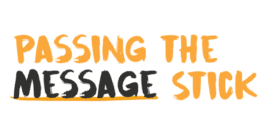Why negative works…

2 November 2020 at 5:32 pm
Our brains are hardwired to seek out and remember negative information – and sadly politicians know this, which is why it’s so important for social purpose organisations to understand the power of framing, writes Neil Pharaoh.
Spare a thought for our friends in Queensland at the moment. While their border politics with NSW is front and centre, they are the latest battleground for our old political favourite – negative campaigning. With good old Clive texting all Queenslanders saying Labor will bring in a 20 per cent death tax (categorically untrue), anti-choice groups running “blatant lies” around Queensland reproductive health laws, and bogus jobs numbers coming from “reputable” bodies such as the Queensland Resources Council – the Bananalanders up north are the latest in the increasingly false and negative campaigning used to win elections.
So why negative campaigning? Does it work? And how can you fight it – or do something about it?
To see how negative campaigning works, we need to dive into a concept called “framing” – which you may have come across in some of my prior articles. Framing is, in short, “80 per cent fat free versus 20 per cent fat” (just kidding). It is how a policy may in fact actually be the same – but the first context you hear it in distorts your optics.
University of California psychology professor Alison Ledgerwood, who is a global leader on the effect of framing, gives a great example:
“Say a candidate proposes a new jobs policy – Jobs Policy A. You don’t know much about it. But one of the first things you hear is that it will save 60 per cent of manufacturing jobs. Your friend, meanwhile, is told that 40 per cent of jobs will be lost.
“It’s the same policy, with the same results, so all else being equal, you and your friend should have a similar outlook on it, right? What research actually finds is that you are more likely to respond favourably, because the information about it has been framed in terms of success. Whereas your friend, who has been thinking of the policy in terms of failure, is not a fan.”
This is the power of framing. So, what does this have to do with the negative? Negative frames are “stickier” – meaning we are more likely to remember them. Professor Ledgerwood’s research has shown our brains are hardwired to seek out and remember negative information – and sadly politicians know this. Once a negative idea is seeded it is hard to replace.
Fighting the negative can also be achieved by framing: repacking and re-naming is one approach, setting a frame to a particular audience is another – when I was co-convenor of Rainbow Labor we used “marriage equality” within the Labor Party and “Freedom to marry” when we were working with Conservative counterparts. Same issue, different frame.
Sadly, negative political framing is not new. For those keen on history, the first documented negative political campaign was when Quintus Tullius Cicero advised his brother Marcus, who was then running for Consulate, to: “remind the people of what scoundrels your opponents are and smear these men at every opportunity with the crimes, sexual scandal and corruption they have bought on themselves”. Over 2,000 years later this tactic still holds.
Typically, there are a few types of negative campaigning:
- substantive criticism
- character assassinations
- pejorative language
- insinuations about a persons’ private life.
A number of tips and tricks are used to maximise impact and push polls – where the pretence of a poll used to push a preloaded question is a regular political one.
So, for those social purpose organisations in the middle of battlefield Queensland, where Clive Palmer has tweaked his 2019 Federal Election strategy (which is credited with helping Scott Morrison stay in office) – it is game on.
The challenge for so many organisations working for social outcomes is to make sure that your frame cuts through, and that you are not caught as collateral damage.
Some of the most successful and often under the radar campaigns I have been involved in knew the power of framing, so if you’re facing the barrel of negativity in the political or policy sense, spend some time working through framing options.
The best, most cost-efficient process to understanding how frames – negative and positive – impact you is a little media monitoring. Over a set period of time, monitor media (traditional or social) searching for specific key terms or topics – when you have a compilation of articles and stories, work with a specialist to cut the terms and topics further:
- Which are negative, neutral or positive?
- What is the underlying argument or assertion?
- How do certain groups react to the assertion of argument?
An example of an argument or assertion might be something like “traditional view of marriage” regarding marriage equality, or “slippery slope” in relation to drug law reform. And, there will always be a few acrobatically framed “backflips” as well as the “freedom of XX” frame. When you can understand how the argument or frame is couched, you can then respond – and in doing so neutralise the negative.
Remember 10 per cent success is better than 90 per cent failure, just kidding they are the same thing – but you get my drift…
About the author: Neil Pharaoh has spent most of his voluntary and professional life in and around social purpose organisations, government, public policy and advocacy. Neil has been behind many leading social policy and advocacy campaigns on gender rights, equality, medical research and education, and ran for Parliament in Victoria in 2014 and 2018. He regularly runs workshops and advocacy sessions and advises leading social purpose organisations on their government engagement strategy and systems. @neilpharaoh on LinkedIn, Twitter, Instagram and Facebook.
Happenings on the hill is a fortnightly column focusing on all things politics, policy, campaigns and advocacy. Stay tuned for updates around political trends and elections, lobbying and advocacy news, and hints, tips and ideas on government engagement that are specifically written for the social purpose/for purpose sector.
If you have any ideas, suggestions, tips or questions, please feel free to email Neil Pharaoh at neil@neilpharaoh.com.au or reach out to him via social media at LinkedIn, Twitter, Instagram and Facebook @neilpharaoh.







